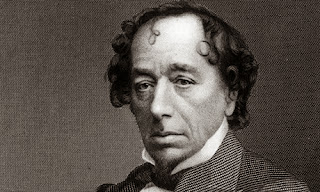"Thar she blows!" said one of the crew as a whale came to the surface. The cetacean wasn't the only thing blowing heavily in The Whale (BBC1), a 90-minute dramatisation of the sinking of the Essex, a Nantucket whaler, by a sperm whale in the Pacific. This was the shipwreck that inspired Herman Melville to write Moby Dick; the BBC film was so laboured it only served to unintentionally remind me of Melville's genius.
The Whale felt like a big-screen movie epic trapped inside a relatively small-budget TV programme; the vastness of the ocean, skies and the whales got hopelessly lost. Worse still, it was structurally flawed, unable to make up its mind whether it was a rite-of-passage story for the young Tom Nickerson on his first voyage, a clash of wills between the two leads – the smouldering First Mate Chase and the even more smouldering Captain Pollard – talking in pirate-speak or Orca Strikes Back. Inevitably, it fell between every stool.
The biggest disappointment was the whale itself. The whale scenes had been filmed by the BBC's natural history unit and they looked like it. They were beautiful, precise and graceful and wouldn't have been out of place in a David Attenborough film. What there wasn't was any sense of the menace or personality that had captured Melville's imagination and was supposed to be present here.
When the whale attacked the boat, it came from out of the blue rather than from the sailors' perceptions they were locked in a struggle that the whale had made personal. As soon as the Essex sunk, the whale was out of sight and out of shot. It was forgotten by everyone, until the mariners had been floating round in the Pacific for several weeks – not, initially at least, appearing to experience much discomfort in their small open lifeboat – when the voiceover declared: "We all wondered if the whale was following us still." The whale must have been as surprised as I was to hear that.
The voiceover was another issue. Presumably because the BBC felt it was in need of a big-name star on which to sell the film, Martin Sheen had been roped in for a curiously lifeless cameo as the ageing Tom Nickerson, recounting his adventures to an unseen audience. All that was required was for Sheen to deliver deathless cliches, such as: "There is a darkness, blacker than the blackest night," straight to camera, a feat he managed without embarrassment. Though as Sheen's face is now so rigid, displays of emotion are probably beyond him. Long before the last remaining survivors were picked up, I was cursing the whale for not having done the job properly an hour previously.
I don't think that the Ladybird book series ever got round to doing a retelling of Moby Dick for children, but the company has managed to encompass almost everything else since it produced its first title during the first world war. For many of us who were born in the 1950s and 1960s, Ladybird books were our first literary love. For some of us, it's a relationship that continues to this day. I still can't resist dipping into my 1963 edition of Captain Scott, An Adventure from History; it gave me an enthusiasm for polar literature that has never dimmed. It was the book that taught me that it was far, far better to fail heroically and die than plan sensibly and come first: a lesson I have carried with me throughout my life.
The Ladybird Books Story: How Britain Got the Reading Bug (BBC4), the latest in the consistently good Timeshift series, was a heartwarming exercise in nostalgia. It outlined how the company began with a format to make the most of paper during the war shortages and became every parent's go-to source for learning-to-read schemes, history, science and nature books. But these were mostly jumping-off points for contributors such as Andrew Motion, Chris Packham and our own Lucy Mangan to talk of the meaning and impact these books had to and on their childhoods.
The Ladybird legacy has been far more powerful than any government initiative. A whole generation of children grew up learning Ladybird History. I'm surprised Michael Gove hasn't placed the books about Florence Nightingingale, Charles II and Sir Francis Drake on the national curriculum. And it's not just the younger generation who have reaped the benefits. During the Falklands war the army handed out copies of the Ladybird How to Read a Map for all those soldiers who were a bit lost near Goose Green. Ladybird: serving the nation faithfully for nearly 100 years. Long may it last.










